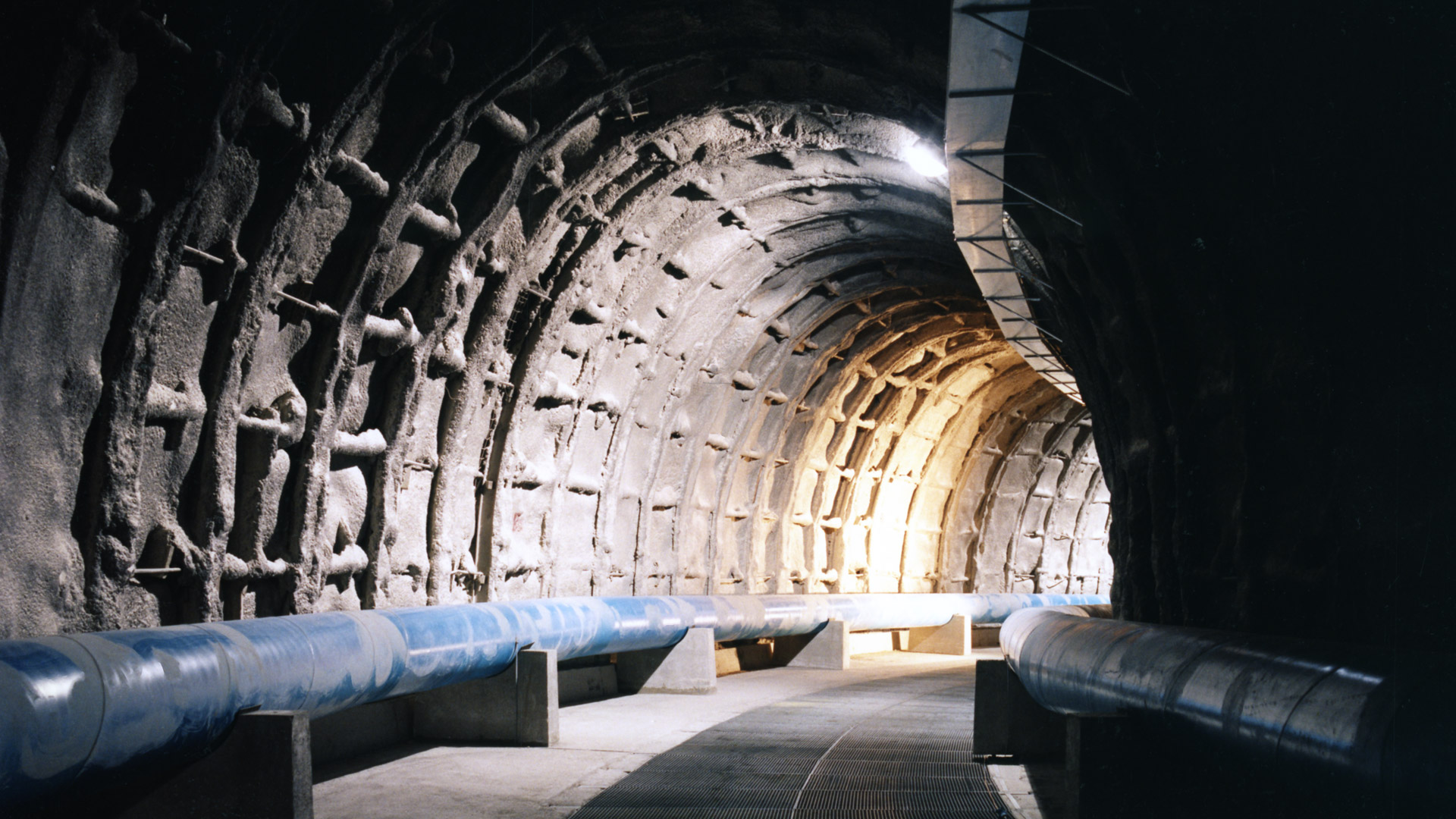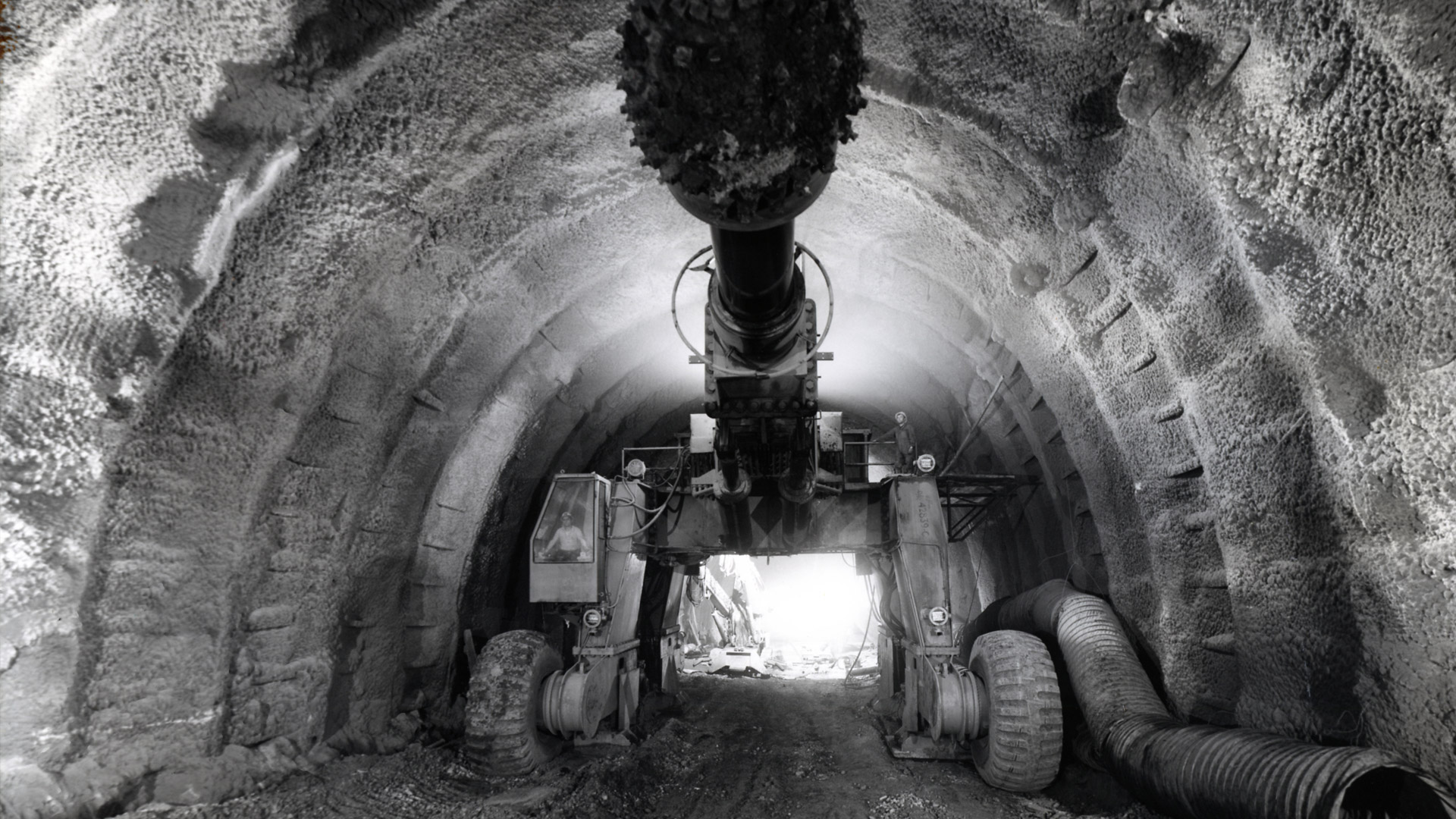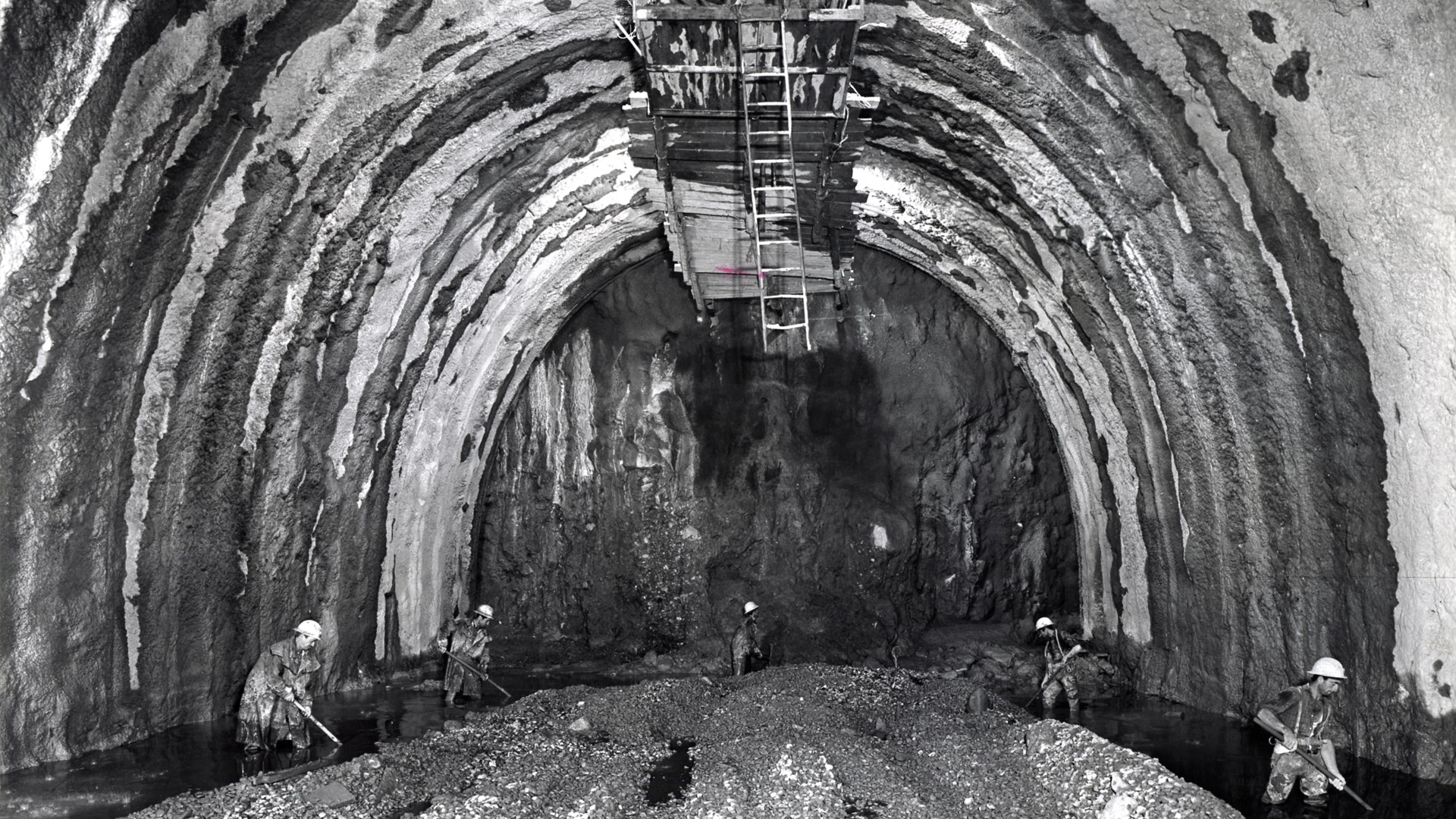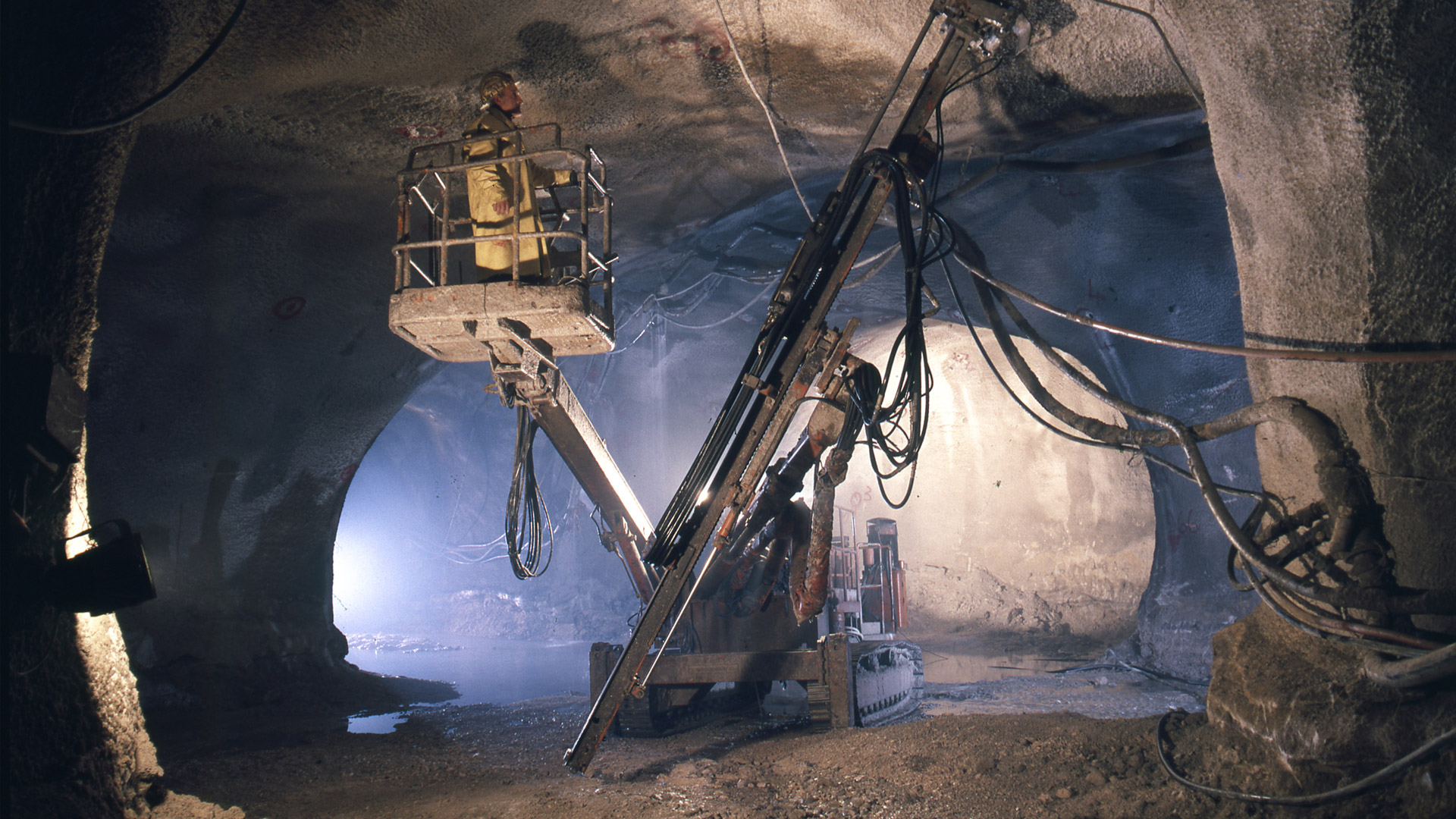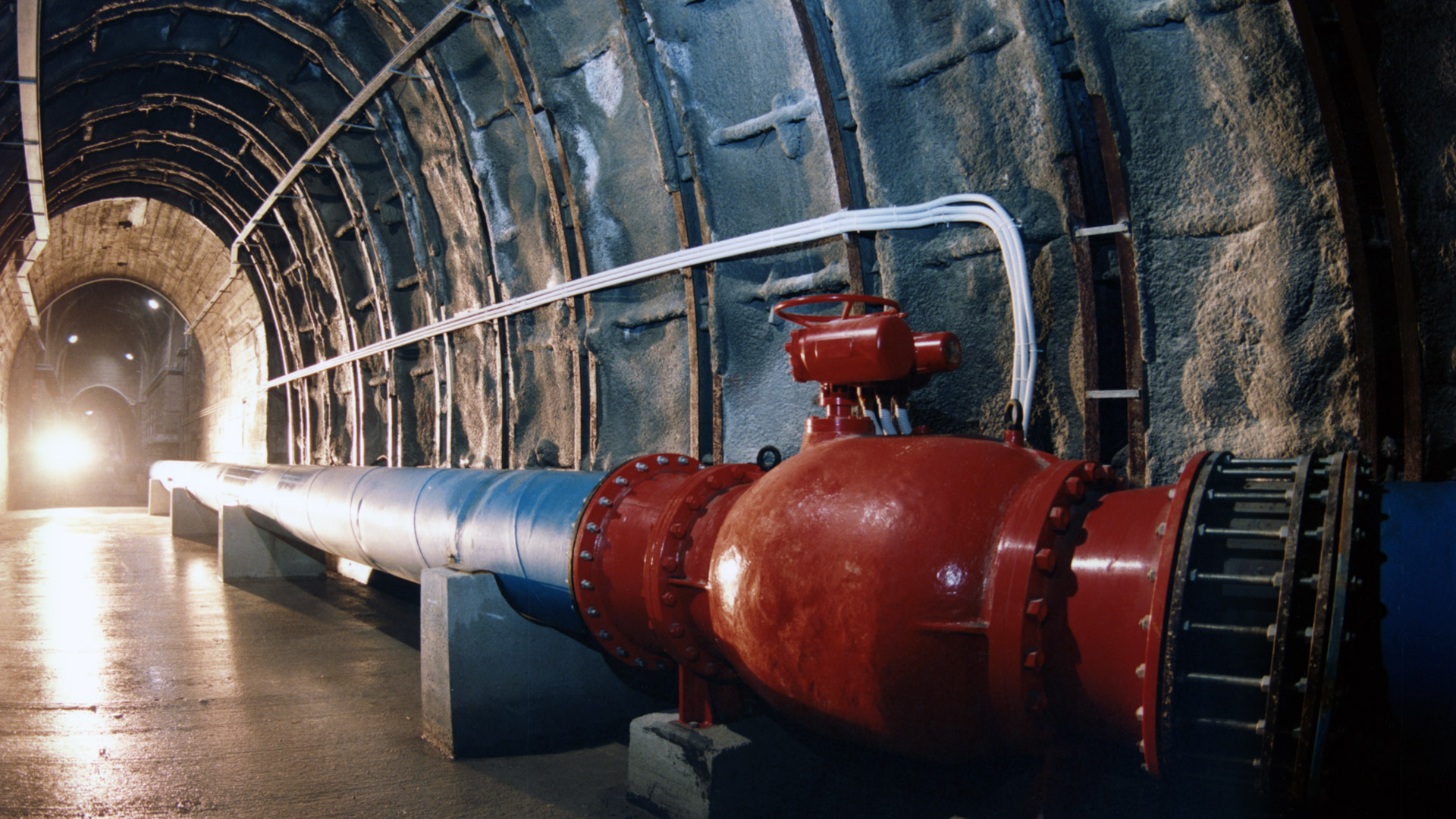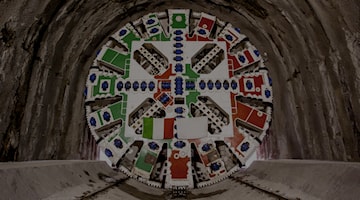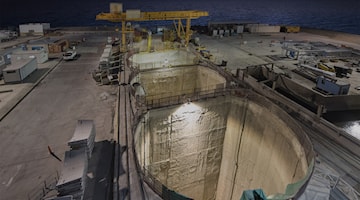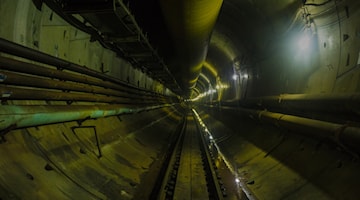Gran SAsso Highway Tunnel
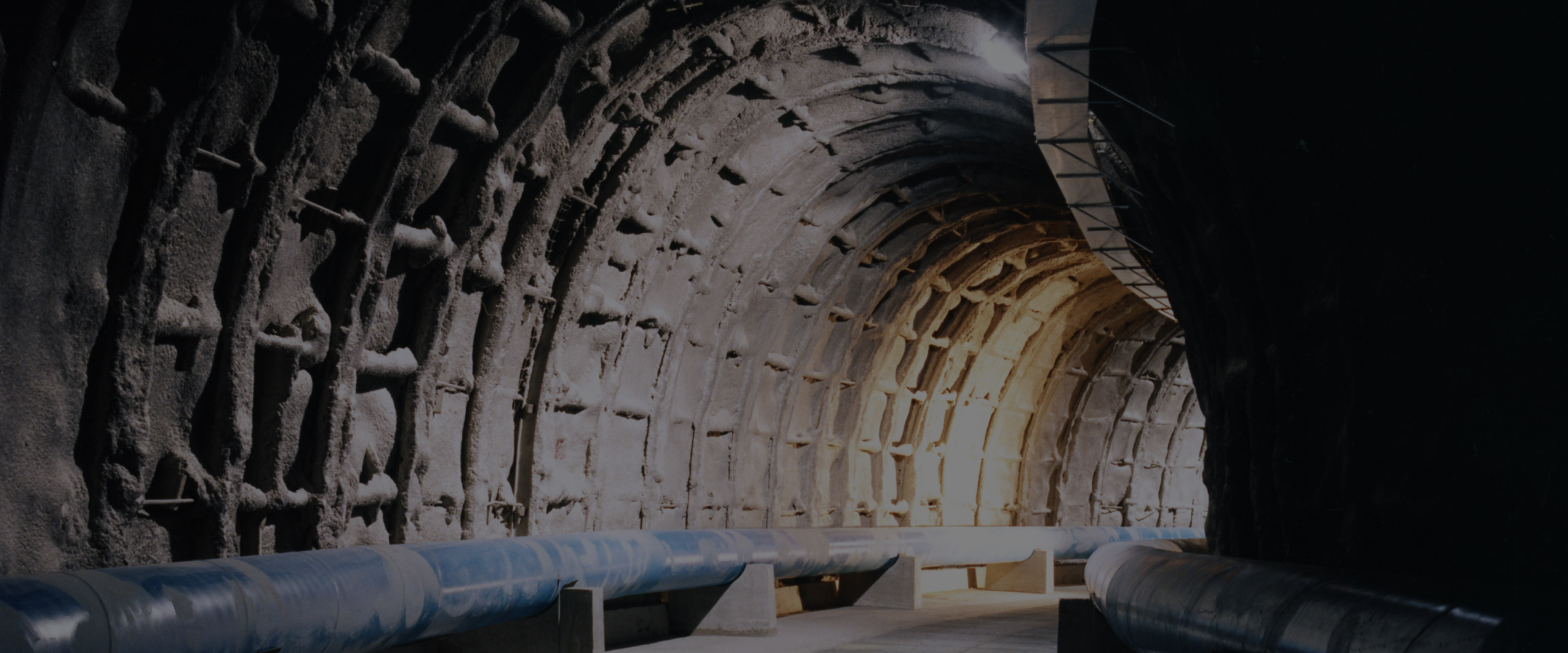
GRAN SASSO HIGHWAY TUNNEL, ITALY
A link, the Gran Sasso tunnel, which is a combination of technical skills and scientific discovery, one of the largest underground works in the world was created.
Work on the Gran Sasso tunnel began in 1969 and it is considered one of the most important works in the Italian motorway system. It is part of the A24 motorway, which links Rome to the Adriatic Sea via Abruzzo, stretches over 10 km and is one of the few double-arch tunnels in Europe.
It is a work of exceptional complexity due to its technical characteristics and geographical difficulties: the tunnel runs under the highest peaks of the Apennines, from Pizzo Cefalone to Corno Grande, and in the last 2.5 km towards Teramo a service tunnel was built 14 m deeper.
In addition to the numerous technical challenges, the construction of the Gran Sasso tunnel also faced various geographical challenges, including geohydrological problems that required advanced engineering solutions. During the works, extensive geological studies were carried out, which revealed the complexity of the Gran Sasso structure.
Thanks to these studies, its construction was also of great importance to the scientific community. During the construction, a huge cavern was discovered under the mountain, ideal for research. In 1981 the Italian government decided to create the Gran Sasso National Laboratories (LNGS), entrusted to the Istituto Nazionale di Fisica Nucleare (INFN), one of the largest underground laboratories in the world.
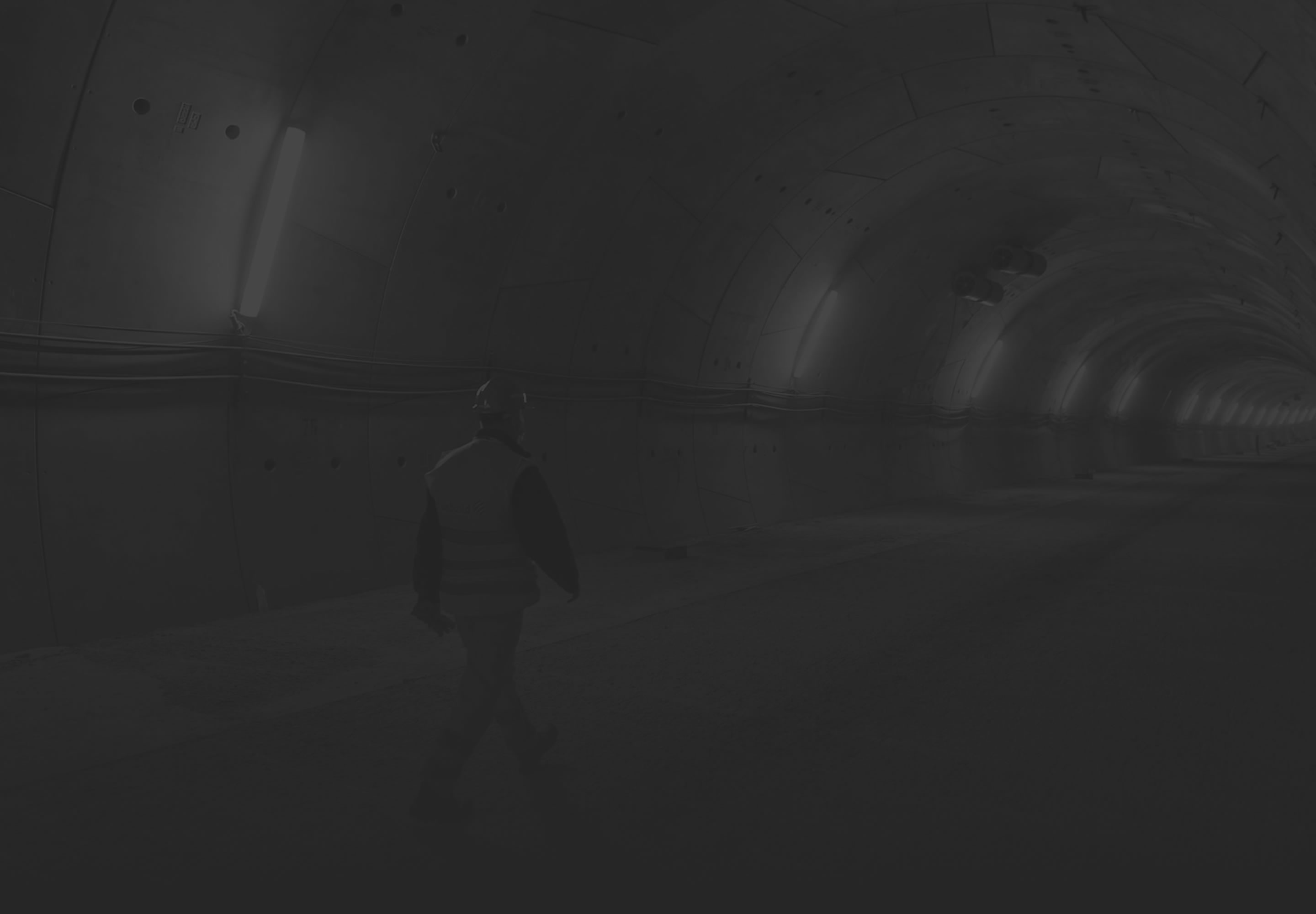
THE WORK AND THE TECHNIQUE
M LENGTH RIGHT DIRECTION
M LENGTH LEFT DIRECTION
M SERVICE TUNNEL
M S.L.M ASSERGI SIDE
M A.S.L. ENTRANCE POINT CASALE SIDE
M SURFACE PIPES
M3 EXCAVATION
M3 CONCRETE
TONS REINFORCEMENT
S.A.R.A. (Società Autostrade Romane e Abruzzesi)
CO.GE.FAR (which later merged into the Group now Webuild)





